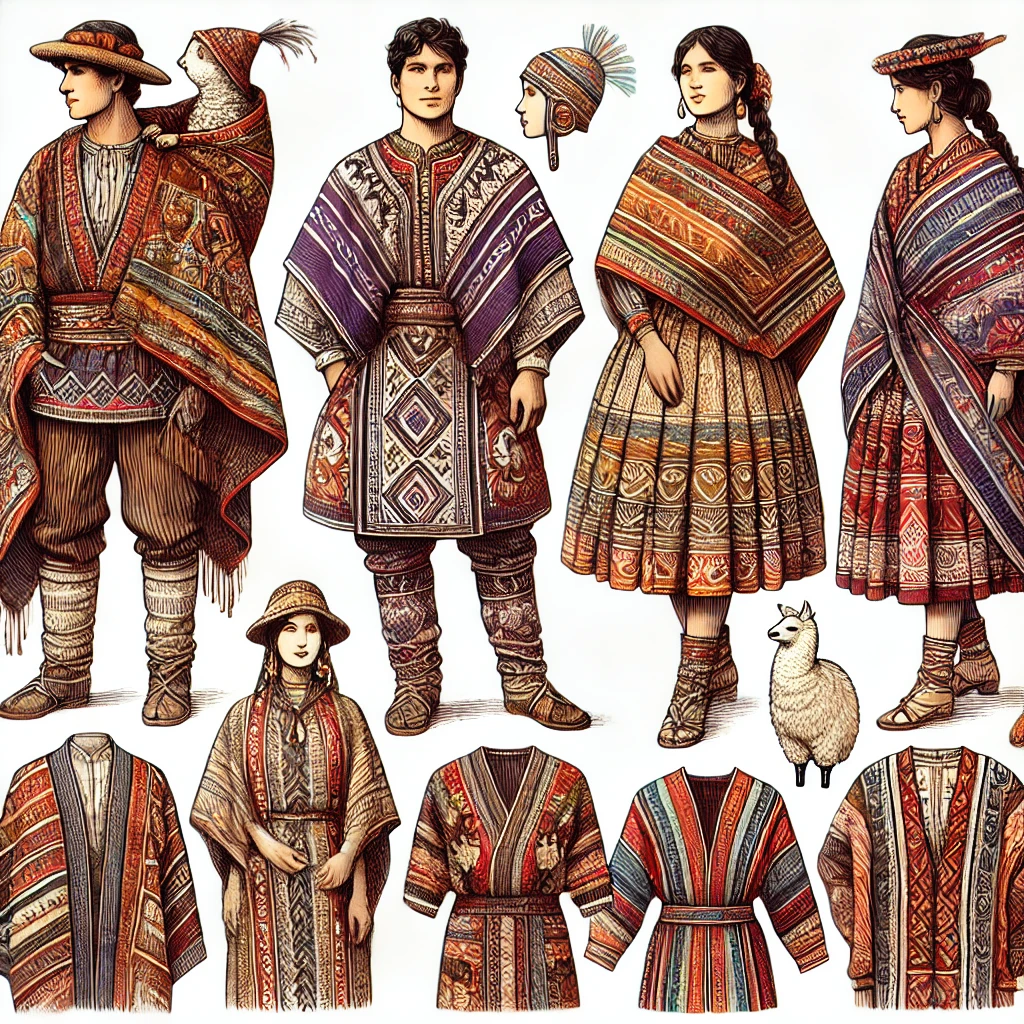Discover the vibrant world of traditional Inca clothing, including materials, colors, and unique accessories that reflect their rich cultural heritage.The Incas, known for their remarkable civilization and rich cultural heritage, had a distinctive style of clothing that reflected their environment, social status, and beliefs. Their attire was not merely about practicality; it conveyed information about one’s identity and role within society. In this post, we will explore the traditional clothing worn by the Incas, delving into the materials and colors that characterized their garments. From the warmth of their textiles woven from alpaca and llama wool to the vibrant hues that showcased their artistry, each piece of clothing tells a story. Additionally, we’ll highlight the various accessories that complemented their outfits, offering further insight into this fascinating ancient culture. Join us as we uncover the intricate details of Inca clothing and the meanings behind them.
Traditional Inca Clothing
The traditional clothing of the Incas was deeply rooted in their culture and the environment surrounding them. The materials used in their garments were primarily derived from the region’s abundant resources. The Incas skillfully utilized cotton and alpaca wool, each providing warmth and durability. These textiles were not only practical but also symbolized the identity of the wearer.
Inca clothing varied according to the social status and region of the individual. The elite often wore garments made from fine weaves of alpaca wool, while lower classes relied on coarser fabrics. Colors played an essential role in Inca apparel; bright hues were achieved using natural dyes extracted from plants, minerals, and insects. The red cochineal dye, for example, produced vibrant shades, making clothing visible against the backdrop of the Andes.
Among the most notable traditional Inca garments were the lliqlla, a rectangular cloth worn by women, and the poncho, a common item for both men and women. The use of such clothing not only served functional purposes, such as warmth and protection from the elements, but also indicated the wearer’s identity and social standing within the Inca empire.
Materials and Colors Used
The clothing of the Inca civilization was as diverse as its culture, utilizing a variety of materials and colors that held both practical and symbolic significance. The Incas primarily used cotton and alpaca wool, which were both lightweight and insulating, making them ideal for the varying climates of the Andes. The ability to weave these materials into intricate patterns was a testament to their advanced textile techniques.
In addition to cotton and wool, the Incas also employed camelid fibers from llamas and guanacos. These fibers were prized for their warmth and durability, making them suitable for cloaks, ponchos, and trousers. The high-altitude environment demanded that clothing not only be aesthetically pleasing but also functional in the face of harsh weather conditions.
As for colors, they varied widely based on the region and the status of the wearer. The Incas derived natural dyes from plants, minerals, and insects, creating vivid shades that communicated social standing and cultural identity. Bright reds, rich greens, yellows, and deep blues were commonly used, often symbolizing elements of nature, such as the sun and earth. The combination of these materials and colors in Inca clothing reflects both the artistic skill and the cultural richness of this ancient civilization.
Inca Clothing Accessories
The Inca Empire, known for its rich culture and history, had unique clothing accessories that complemented their garments and showcased their status. Accessories played a vital role in Inca fashion, often symbolizing wealth and the social hierarchy.
- Fashionable Headpieces: The Incas wore intricate headbands, often adorned with feathers and jewels, signifying the wearer’s rank.
- Capac Mocos: These were decorative cold-weather hats that indicated the wearer’s social class and were typically made from highly valued alpaca or llama wool.
- Jewelry: Gold and silver jewelry, including earrings, necklaces, and bracelets, were commonly worn to flaunt wealth and status.
- Belts and Sashes: Used to secure garments and add style, these were often woven from colorful materials that represented local status and tribe.
Each accessory was not just for show; it held significance in Inca culture and often reflected the user’s identity and lifestyle. The combination of these accessories with their clo
Frequently Asked Questions
The Incas primarily used materials such as cotton, llama wool, and alpaca wool for their clothing.Incan men typically wore a tunic, known as a 'saya', which was often belted at the waist and made from wool or cotton.Incan women usually wore long dresses called 'anaku' that were complemented with shawls or capes for warmth.Yes, the Incas adorned themselves with jewelry made from gold, silver, and semi-precious stones, as well as decorative headdresses and sashes.The varied climates of the Inca Empire led to the use of layered clothing to adapt to different temperatures, with warmer materials being favored in colder regions.Color often indicated social status and community affiliation, with vibrant dyes derived from natural sources being used to create distinct patterns and hues.Incan clothing was deeply tied to their identity, showcasing religious symbolism, social hierarchy, and regional styles that represented their rich cultural heritage.


